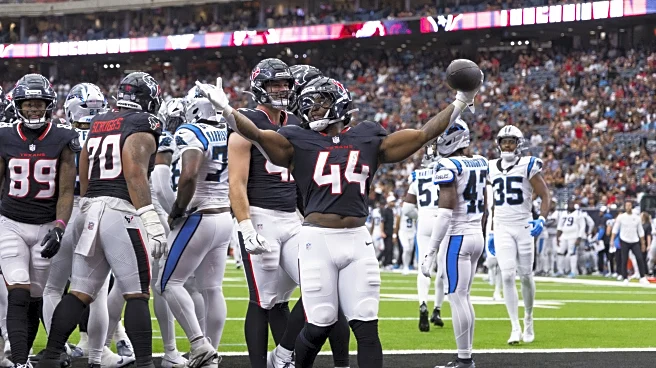What is the story about?
What's Happening?
Researchers Miski Mohamed and Matthew Winn from the University of Minnesota have conducted a study analyzing Taylor Swift's speech patterns over the years. The study, published in the Journal of the Acoustical Society of America, examined Swift's interviews from different phases of her career to understand how her dialect evolved. The researchers focused on three major periods: the 'Fearless' era in Nashville, the 'Red' era in Philadelphia, and the 'Lover' era in New York City. They found distinct changes in Swift's accent and speech, which they attribute to her career transitions and strategic decisions to align with her musical evolution.
Why It's Important?
The study highlights the influence of geographical location, social groups, and career status on speech patterns. Swift's ability to adapt her dialect reflects broader implications for understanding how language can convey identity and community belonging. This research provides insights into how public figures may use language strategically to shape their public persona and connect with different audiences. It also underscores the dynamic nature of language and its role in personal and professional development.
What's Next?
The findings from this study could inspire further research into the relationship between language, identity, and career progression. It may also lead to more studies on how public figures use language to influence their image and connect with diverse audiences. Additionally, the research could have implications for fields such as sociolinguistics and communication studies, offering new perspectives on the adaptability of language in response to social and professional changes.
Beyond the Headlines
The study raises questions about the ethical considerations of using language as a tool for public image management. It also highlights the cultural dimensions of dialect adaptation, suggesting that language can be a powerful means of expressing identity and belonging. The research may prompt discussions on the role of language in shaping public perceptions and the potential impact on cultural and social dynamics.
AI Generated Content
Do you find this article useful?
















